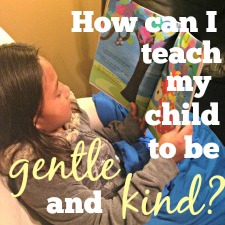 How does your child’s engine run? If your child is like mine her engine runs on high most of the time. We are constantly saying “slow down,” “be careful,” “be safe,” “be gentle,” and “be kind.” Sometimes I feel like a broken record. Getting her to slow down and be aware of her surroundings and other people around her can be a challenge at times. She often doesn’t know her strength. The squishy water tube that I thought would be a great sensory toy ended up being squeezed so hard that the tube broke and the liquid splattered all the way up to the driver’s side of my car from the back seat. Lesson learned! No more squishy water tubes!
How does your child’s engine run? If your child is like mine her engine runs on high most of the time. We are constantly saying “slow down,” “be careful,” “be safe,” “be gentle,” and “be kind.” Sometimes I feel like a broken record. Getting her to slow down and be aware of her surroundings and other people around her can be a challenge at times. She often doesn’t know her strength. The squishy water tube that I thought would be a great sensory toy ended up being squeezed so hard that the tube broke and the liquid splattered all the way up to the driver’s side of my car from the back seat. Lesson learned! No more squishy water tubes!
Dr. Karyn Purvis and Dr. David Cross, developers of the Trust-Based Parenting Model, encourage parents to use Life Value Terms to help children from hard places learn important principles and life values. Purvis and Cross state “gentle and Kind” is a term that helps remind a child, in the moment, when they are being too rough and they need to use a gentle touch. For example, if a child is hitting a family pet a parent might say, “Are you being gentle and kind? Can you try that again?” Once the child is able to pet the animal gently the parent should follow up with praise like, “Great job being gentle and kind.”
Cindy Lee has taken the principles of “gentle and kind” from Trust-Based Parenting and developed a children’s book to reinforce this concept. Lee’s book, “It’s Tough to Be Gentle: A Dragon’s Tale” tells a story of a dragon named Dex who wants to play with baby birds but is not allowed to until he learns to be gentle and kind. In order to learn to become gentle and kind he asks his friends for help. His friend Mr. Bear tells Dex that the only way to get the honey from the hive is to be very gentle or you will get stung. Even though Dex tries very hard he is too rough and the hive falls and Dex is stung. Dex’s other friends, Mr. Raccoon and Mr. Skunk, also try to help him learn to be gentle and kind. Even though he doesn’t get it right on the first try he is able to try again and succeed. By the end of the story, Dex is granted permission to play with the baby birds.
Just like it took Dex several attempts to learn to be gentle and kind it will take your child many reminders, redo’s and positive reinforcement for her to understand these principles. When teaching a child to regulate their bodies it helps to have a few tools in your bag. One tool that I like is the engine analogy, from TherapyWorks, to explain energy levels to my kids. I have seen many visual aids to accompany this analogy. For example, you can help your child create speedometer to measure their energy level and designate colors like red for high, yellow for low energy, green for just right. Characters or animals can also be used to demonstrate different energy levels. For example, you could use Tigger for high energy, Winnie the Pooh for just right, and Eeyore for too low. At school, my children’s teachers use a number system to manage voice levels: 0 = no talking, 1 = whispering, 2 = conversation/inside voice, 3 = have fun/outdoor voice.
Another way to teach a child to be gentle and kind is to role play or practice with puppets or stuffed animals. Ask your child to demonstrate what not being gentle or kind looks like then praise them for doing a fantastic job of not showing gentle or kind. Then practice showing gentle and kind the right way and praise them again for a job well done. The best way to reinforce a behavior is to catch your child being gentle and kind on their own and praise them in the moment.
If you feel like your child struggles more than most with gentle touch your child could have a sensory processing disorder. A sensory processing disorder is an over-response or an under-response to a stimulus. An occupational therapist familiar with sensory integration can assess your child and determine if therapy is necessary. For more information about Sensory processing disorder and how to check if your child has symptoms click here. MLJ Adoptions offers support services to adoptive families and can provide additional resources on this topic and many others.
